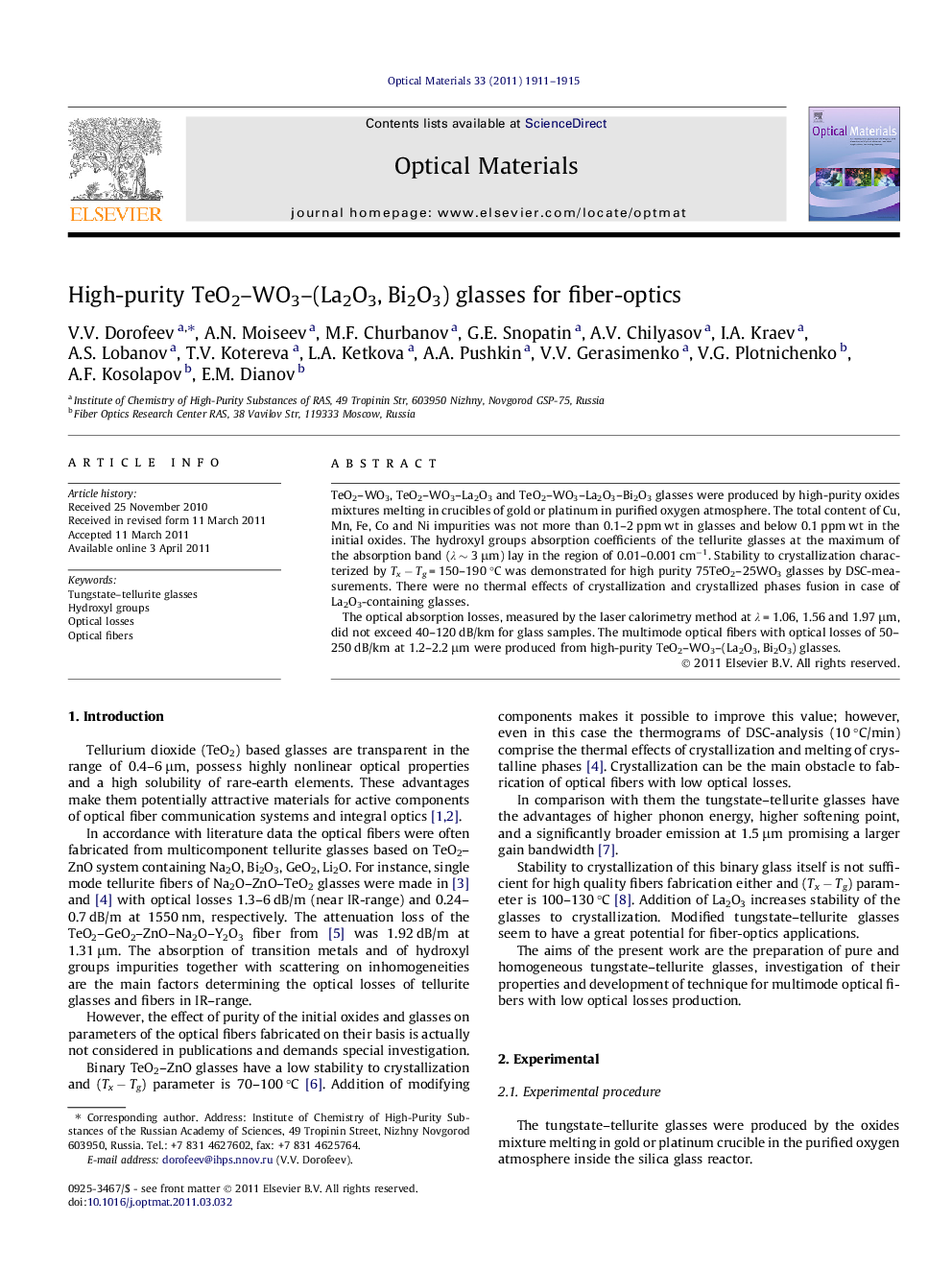| Article ID | Journal | Published Year | Pages | File Type |
|---|---|---|---|---|
| 1494806 | Optical Materials | 2011 | 5 Pages |
TeO2–WO3, TeO2–WO3–La2O3 and TeO2–WO3–La2O3–Bi2O3 glasses were produced by high-purity oxides mixtures melting in crucibles of gold or platinum in purified oxygen atmosphere. The total content of Cu, Mn, Fe, Co and Ni impurities was not more than 0.1–2 ppm wt in glasses and below 0.1 ppm wt in the initial oxides. The hydroxyl groups absorption coefficients of the tellurite glasses at the maximum of the absorption band (λ ∼ 3 μm) lay in the region of 0.01–0.001 cm−1. Stability to crystallization characterized by Tx − Tg = 150–190 °C was demonstrated for high purity 75TeO2–25WO3 glasses by DSC-measurements. There were no thermal effects of crystallization and crystallized phases fusion in case of La2O3-containing glasses.The optical absorption losses, measured by the laser calorimetry method at λ = 1.06, 1.56 and 1.97 μm, did not exceed 40–120 dB/km for glass samples. The multimode optical fibers with optical losses of 50–250 dB/km at 1.2–2.2 μm were produced from high-purity TeO2–WO3–(La2O3, Bi2O3) glasses.
► High-purity tungstate-tellurite glasses and optical fibers were made and investigated. ► Lowest hydroxyl groups absorption level was of 0.001-0.002 cm−1 (λ ∼ 3 μm). ► High stability of glasses to crystallization was proved by DSC measurements. ► Optical absorption losses did not exceed 40-120 dB/km in glass samples. ► Optical losses of 50–250 dB/km at 1.2–2.2 μm were attained in multimode optical fibers.
